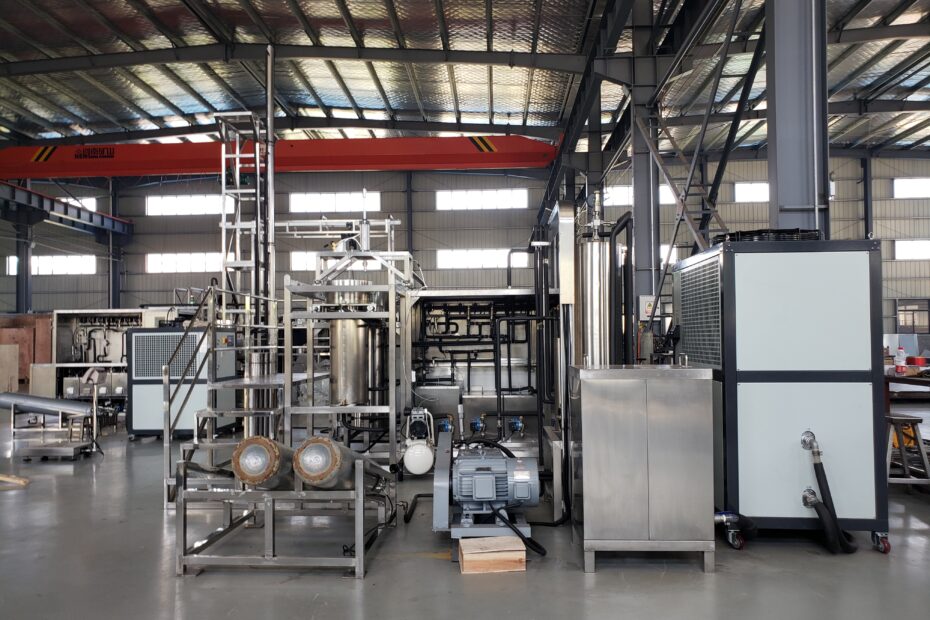In the realm of extraction processes, two methods stand out for their efficiency and versatility: Supercritical CO2 extraction and solvent extraction. Both techniques are widely used across industries such as pharmaceuticals, food, and cosmetics to extract valuable compounds from botanicals, herbs, and other organic materials. However, they differ significantly in terms of principles, applications, and outcomes.
Comparing : Principles and Processes
- Supercritical CO2 Extraction: This method utilizes carbon dioxide in a supercritical state as the solvent. Under specific temperature and pressure conditions, CO2 becomes a supercritical fluid with properties of both a liquid and a gas. In the extraction process, CO2 is pumped into a chamber containing the material to be extracted. The supercritical CO2 acts as a solvent, dissolving the target compounds from the raw material. Subsequently, the CO2 carrying the extracted compounds is depressurized, allowing the CO2 to revert to its gaseous state, leaving behind the desired extract.
- Solvent Extraction: In contrast, solvent extraction involves the use of a liquid solvent to dissolve the target compounds from the raw material. Common solvents used in this method include ethanol, hexane, and methanol. The process typically involves soaking the raw material in the solvent, allowing the solvent to dissolve the desired compounds. The resulting solution, known as the extract, is then separated from the solid residue through filtration or evaporation.
Steps involved in Supercritical CO2 extraction
- Preparation: The raw material is typically ground or pulverized to increase its surface area, facilitating better extraction.
- Extraction: The ground material is placed in an extraction vessel, and CO2 is pumped into the chamber under specific temperature and pressure conditions.
- Separation: After extraction, the CO2 carrying the dissolved compounds is passed through a separator, where the pressure is reduced, causing the CO2 to revert to its gaseous state, leaving behind the extract.
Various parameters Comparison : Supercritical CO2 extraction vs solvent extraction
| Parameter | Supercritical CO2 Extraction | Solvent Extraction |
|---|---|---|
| Solvent | CO2 | Liquid solvents |
| Selectivity | High | Variable |
| Environmental Impact | Low (CO2 is non-toxic and readily available) | High (some solvents are toxic and pose environmental risks) |
| Residue | Minimal | Possible |
| Complexity | Moderate | Simple |
| Cost | Higher | Lower |
Application Considerations
The choice between Supercritical CO2 extraction and solvent extraction depends on various factors, including the nature of the target compounds, regulatory requirements, and economic considerations:
- Target Compounds: Supercritical CO2 extraction is particularly suitable for extracting heat-sensitive compounds, such as essential oils and flavors, due to its relatively low extraction temperature. In contrast, solvent extraction may be preferred for extracting a broader range of compounds, including polar and non-polar substances.
- Regulatory Requirements: Some industries, such as pharmaceuticals and food, have stringent regulations regarding solvent residues in extracts. Supercritical CO2 extraction is favored in such industries due to its minimal residue and non-toxic nature.
Conclusion
In conclusion, both Supercritical CO2 extraction and solvent extraction offer unique advantages and applications in the extraction of valuable compounds from organic materials. While Supercritical CO2 extraction is prized for its selectivity, environmental friendliness, and minimal residue, solvent extraction remains a cost-effective and versatile option for a wide range of applications.
The choice between the two methods ultimately depends on the specific requirements of the extraction process, including the nature of the target compounds, regulatory constraints, and economic considerations. By understanding the differences between Supercritical CO2 extraction and solvent extraction, researchers and industry professionals can make informed decisions to optimize their extraction processes and achieve desired outcomes efficiently.
